Emergency physicians and radiologists are in a unique position to identify nonaccidental trauma, and to prevent future abuse or neglect, because children are often brought to the emergency department with relatively minor trauma. Common injuries include fractures, intracranial hemorrhage or contusion, and intra-abdominal injuries. Head injury is important to recognize, because it represents a frequent cause of death in abused children below the age of 3.
Suspicious injuries include any fracture in a pre-ambulatory child, any injury incompatible with the clinical history, unusual delay in seeking medical attention, retinal hemorrhage, multiple fractures in the absence of any family history of osteogenesis imperfecta, and subdural hematomas of different ages. A skeletal survey should be performed in cases of suspected abuse to evaluate the location and extent of present and remote osseous injuries.
Certain fractures are recognized as typical of nonaccidental trauma: metaphyseal (bucket- handle or corner) fractures, posterior rib fractures, skull fractures, scapular fractures, and sternal fractures. Periosteal reactions and juxtaosseous soft tissue calcifications signify healing fractures and should be carefully documented for medicolegal purposes.
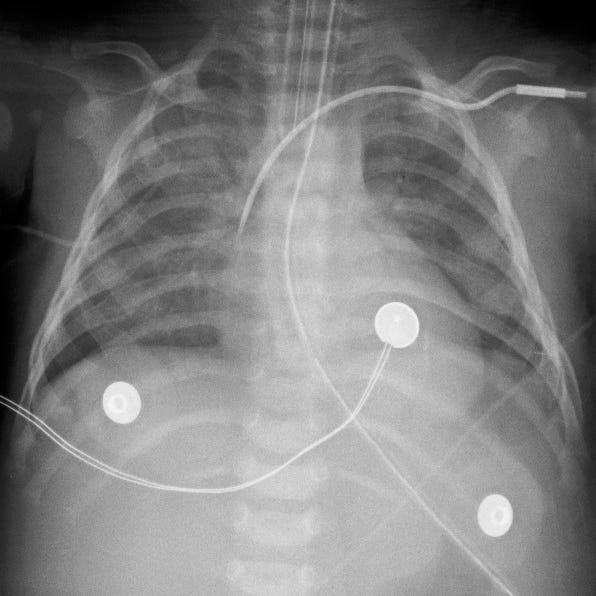
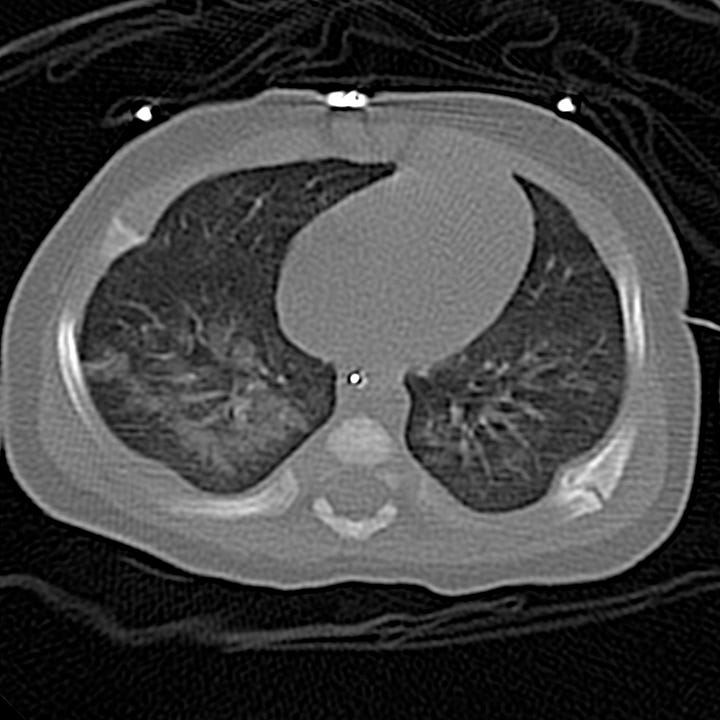
Bilateral posterior rib fractures. Healing fractures related to squeezing of the infant’s thorax during a past episode of forceful shaking. Superimposed acute right lower lobe consolidation versus contusion.
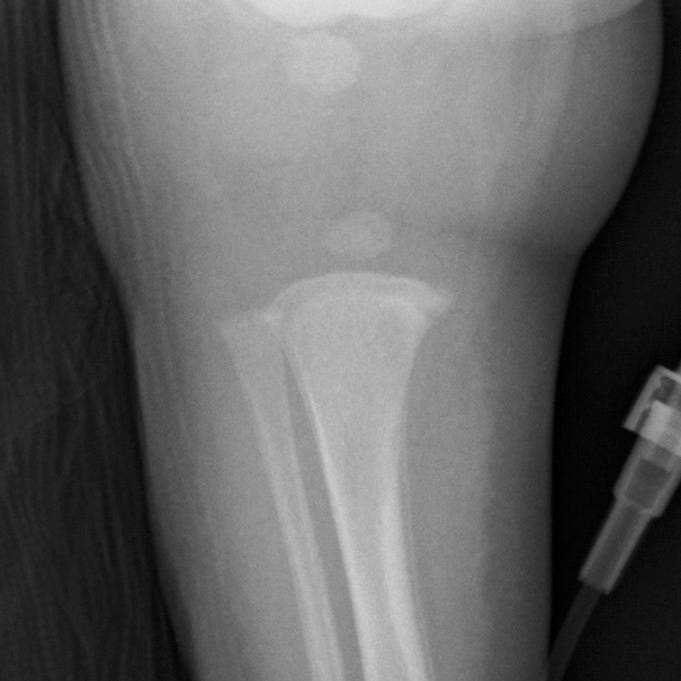
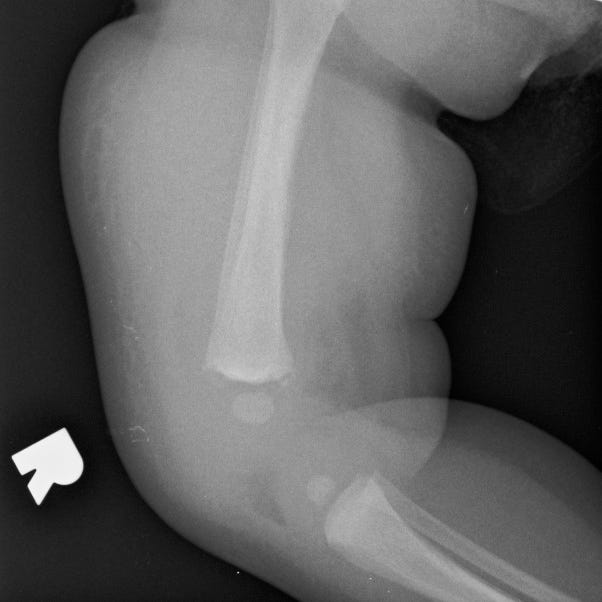
Metaphyseal corner fractures. Fractures of the distal femoral and proximal tibial metaphyses result from a whiplash movement of the arms when shaken.
Head CT identifies skull fractures that can be missed by skeletal survey as well as more significant underlying brain injury. Nonparietal skull fractures, diastatic sutures, fractures that cross sutures, or depressed fractures should be considered suspicious. MRI can evaluate the brain parenchyma more sensitively and show subdural hematomas of varying ages, hypoxic-ischemic injury, cerebral contusions, and traumatic subarachnoid hemorrhage.
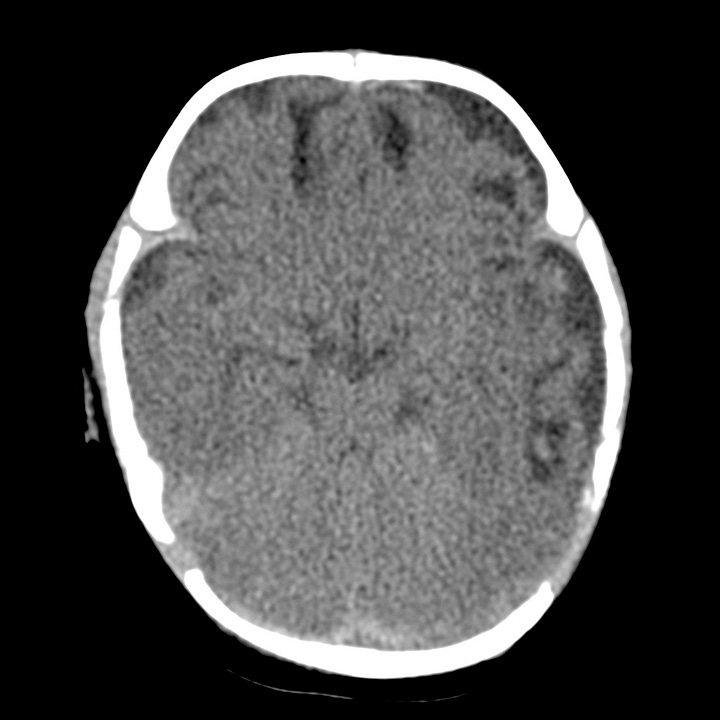
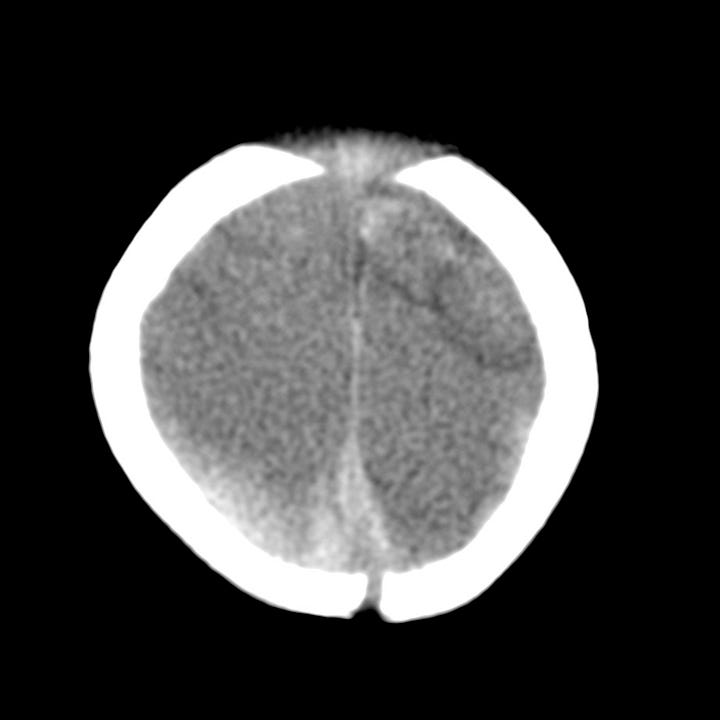
Head injury in nonaccidental trauma. Bilateral inferior frontal and anterior temporal cortical encephalomalacia indicates remote injury; acute right parietal and left frontal vertex subdural hematomas.

